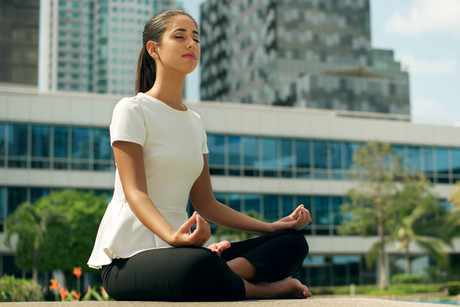Future workplaces for health and wellbeing

As far back as the 1800s, companies like the American National Cash Register were introducing gyms, swimming pools and recreation gardens for the health of employees.
In the 1980s, workplace wellness became even more of a priority, led by an increase in public health programs to deal with health issues such as weight gain, diabetes and heart disease. By the year 2000, there was a shift to a more holistic concept of workplace wellness, fostered by the research of Dee Edington, now Director of the Management Research Centre at the University of Michigan. His current philosophy? That workplaces should prioritise people and utilise “21st-century discoveries in wellness, psychology, business, kinesiology, sociology, architecture and other disciplines”.
Wellbeing programs
Research from the School of Public Health at Harvard University has found that for every dollar spent on workplace wellness programs, employees save around US$2.73 (AU$3.51) due to a reduction in sick days and increase in the health of staff.
“They can reduce absenteeism and stress and boost health, team morale and job satisfaction,” agrees Meredith Fuller, careers counsellor and workplace wellness expert. “Even simple initiatives such as walking meetings, standing desks and nutrition programs can do a great deal to help prevent disease.” This has been particularly important since technology has revolutionised the speed and manner in which we work.
With a recent study finding that healthier employees in Australia were three times more effective than less healthy employees, WellBeing GROW set about producing tailored wellness programs for Australian business. The programs are designed to help businesses enforce lasting cultural change, maximise talent acquisition and improve productivity. Each program also includes team fitness solutions and flu vaccinations.
“Too many organisations see ‘corporate wellness programs’ as a box that needs to be ticked for HR purposes, but sticking a free fruit box in the staff kitchen and calling it a day simply doesn’t cut it,” said WellBeing GROW Managing Director Charles Hunter.
“The systemic issues that arise when the health and happiness of employees are overlooked are far-reaching, and impact both the individuals and the organisation. Mental health issues such as stress, burnout, anxiety and depression often stem from the workplace, and can have a disastrous effect on the bottom line of a business.”
Flexible workplaces
Courtesy of the cloud and virtual private networks, 9 to 5 work days may disappear as people negotiate their work hours. “The local cafe, back verandah or home office will also be considered legitimate workspaces,” said Fuller.
Melbourne-based company Envato has already introduced a policy that employees can work from anywhere, at any time. “People are looking to work in organisations that work in well with their own lives and values; many workers are even talking about taking pay cuts just to move out of their rigid inflexible environment to a more progressive and trusting workplace,” said Envato Chief People Officer Michelle Ridsdale. “There is definitely a cost in setting up the infrastructure and technology to support remote work, but in the long run, our company sees an immense benefit by attracting and retaining the right people who actually drive business forward. In our most recent employee engagement survey, 95% of employees felt our top strength was ‘Work-Life Balance’ followed by ‘Autonomy’ (90%) with employees feeling empowered and trusted in their role.
Reducing stress with nature
Stress costs Australian business more than $10 billion per year, shows research by Safe Work Australia. Implementing more green spaces and designated leisure areas in a workplace might help. According to University of Florida research, as nature contact in the workplace increases, employee stress levels and general health complaints go down.
At its new HQ in New York, L'Oréal has natural light and a rooftop terrace for work or leisure with views of the Hudson River. Natural light exposure is said to not only reduce energy costs and carbon footprint but also boost sleep duration (by around 46 minutes), according to research by Northwestern University.
At Microsoft’s Living Wellness Centre, employees can access free health screening (such as eye checks) and services such as diet and wellness coaching. Microsoft has also recently built 12-foot-high, Wi-Fi-equipped treehouses at its wooded campus in Redmond, Washington.
Australia’s Blackmore’s Wellness Centre in Sydney has a fully equipped modern gym and floor space to house group sessions of yoga. “We provide staff with a calm and relaxed space for therapeutic treatments, naturopathic consultations and a fitness centre to inspire physical fitness and wellbeing,” said Blackmore Company Secretary and Director of Corporate Affairs Cecile Cooper.
In 2018, many workplaces have now identified the opportunities and benefits that come from looking after the health and wellbeing of its workers.
Contract labour in mining: do savings outweigh safety outcomes?
Australian researchers have analysed decades of research on contract labour in mining, arguing...
Psychosocial risk management: eight trends with tips
Psychosocial risk management has become a central pillar of workplace safety and organisational...
50 in 2024: Victoria's workplace fatalities figures
Transport, construction and agriculture were Victoria's deadliest sectors in 2024, with...










